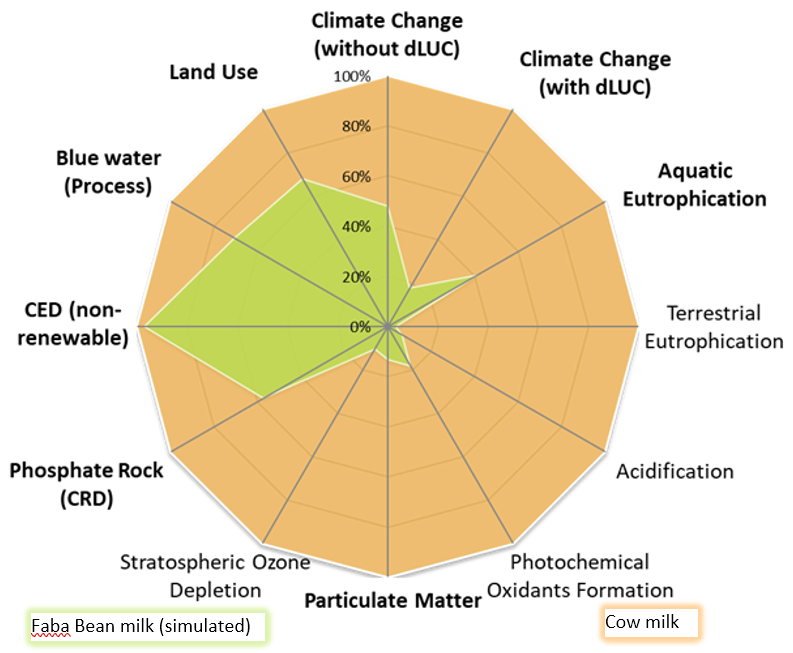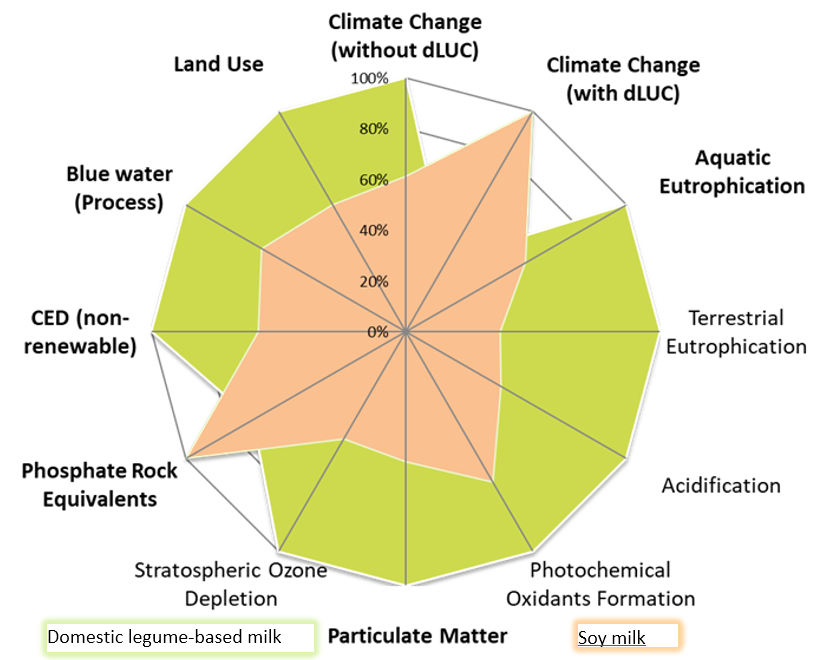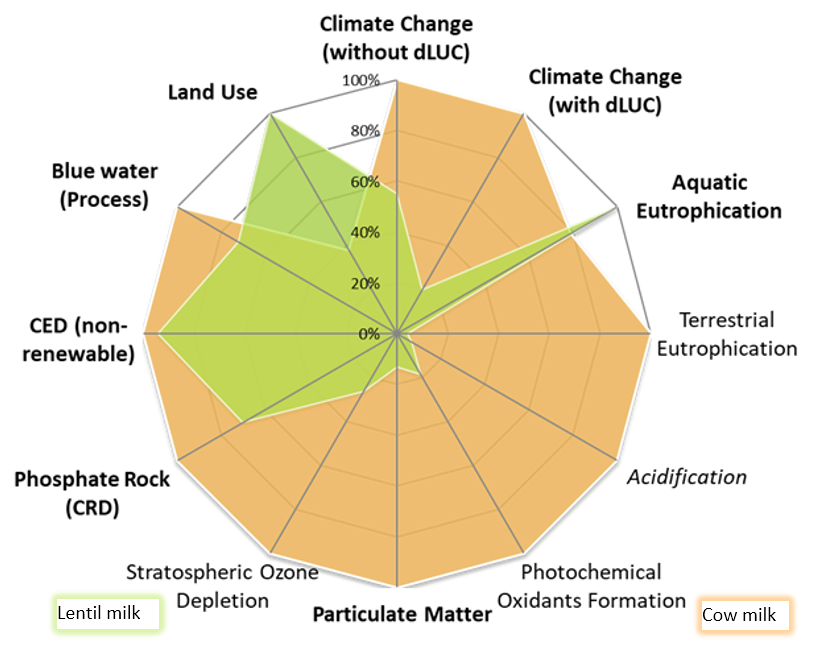The words ‘sustainability’ and ‘climate change have been on everybody’s minds, and rightly so. In 2019, numerous high-level scientific reports from groups such as the IPCC and the EAT Lancet committee have presented clear findings: to curb climate change and transform to healthier diets by 2050, requires substantial, if not revolutionary methods to the way we produce and consume our foods.
The Food and Agriculture Organization of the United Nations (FAO) has stated that the livestock sector is a significant contributor to climate change. The sector is responsible for about 16% of all anthropogenic greenhouse gas (GHG) emissions, with cattle producing 62% of livestock sector emissions, and beef and dairy cattle generating roughly equal amounts of greenhouse gases[1]. As such, the consumption of milk has been identified as one of the main drivers of human food consumption that exceeds the planetary boundaries[2]. A shift from cow’s milk towards plant-based milk substitutes could help reduce the pressure we are putting on the environment.
Plant-based milk substitutes are flying off the shelves. Having quickly become some of the best-selling products among all plant-based-alternatives available, they have made way into our lives as household staples, no longer consumed exclusively by vegans or vegetarians. However, not all plant-based milk alternatives are equal. Milk alternatives made from oats or rice contain very little protein. For this reason, legumes are increasingly being considered as a raw material, giving plant milk alternatives a higher protein content. One such rising star, is the humble pea, packing about 3.3 g of protein per 100 ml, essentially the same to cow’s milk[3]. Another rising ingredient, is the lentil.
PROTEIN2FOOD project partners have developed a plant-based milk substitute using lentil protein isolate. This tasty milk substitute has a protein and fat content similar to cow’s milk and appealing sensory properties, thanks to the plant-based protein isolates which are a prerequisite for achieving the high protein content. Despite these ingredients requiring substantial processing, the lentil milk alternative is not only nutritionally similar to cow’s milk but is also more environmentally friendly.
PROTEIN2FOOD partners at IFEU conducted life cycle assessments (LCAs), which cover the activities throughout a product’s life cycle. For their analysis on the lentil milk alternative they included data from crop cultivation, crop processing and lentil milk alternative production and for cow’s milk they included data from feed crop growing, feed processing and typical European intensive animal husbandry including milk production. They also compared the lentil-based milk alternative to popular soy-based milk alternatives and simulated the production of plant milk alternatives from fava beans.
Lentil milk versus cow’s milk
The spider diagram in Figure 1 shows the comparison between lentil milk alternative (green) and cow’s milk (orange). The environmental footprint of the products on the 12 indicators is represented by the outer circle (worse impact at 100%) and centre (smallest environmental impact). The methodology of the LCAs and the detailed final results can be found on the PROTEIN2FOOD website.
The lentil milk alternative shows far lower environmental impacts for most indicators, like climate change (Figure 1). If CO2 emissions from direct land use change (dLUC), which occur when carbon-rich soils like those under rain forests are converted into agricultural land for production of soy feed, are accounted for, the advantages of the lentil milk alternative are even greater. Yet, lentils currently achieve relatively low crop yields, which means worse environmental impacts are seen for the indicators of land use and aquatic eutrophication.
Figure 1. Environmental footprint of P2F lentil milk prototype (green) versus cow milk (brown)
(Diagram shows worse impacts at 100% (outer circle) and smaller environmental impact in the centre)
Due to low crop yields for lentils, PROTEIN2FOOD partners also simulated an optimised production of plant milk alternatives based on faba beans, which has a crop yield 3 times that of lentils. The results in the spider diagram (Figure 2) show that using higher yielding legume crops for plant milk alternatives could easily help overcome these existing weaknesses.

Figure 2. Environmental footprint of simulated faba bean milk (green) versus cow milk (brown)
(Diagram shows worse impacts at 100% (outer circle) and smaller environmental impact in the centre)
Lentil and faba bean versus soy
Soy-based milk is the only milk alternative currently broadly available with a protein content comparable to cow’s milk; however, they are associated with environmental and allergy-related issues. Comparisons of soy-based milk with the P2F lentil milk alternative and the simulated faba bean milk alternative, found that soy-based milk alternative performs better overall, which means there is still room for improvement of the lentil/faba bean milk alternatives (Figure 3), such as:
- working on improving the crop yields of lentils and faba beans to match those of soy;
- recovering and enhancing the value of the waste streams from lentils and faba bean which would help reduce the environmental footprint even further.
The biggest drawback to soy is associated with its carbon footprint, however, this depends on whether soy production is associated with direct land use change (dLUC), which is often the case with soy from South or North America – or not, like in the case of soy produced within the EU. For instance, the Danube soy project explicitly takes care to avoid dLUC occurring.

Figure 3. Environmental footprint of plant milk from domestic legumes (green) assuming a mixture of 50% lentil milk and 50% simulated faba bean versus soy milk (orange)
(Diagram shows worse impacts at 100% (outer circle) and smaller environmental impact in the centre)
The PROTEIN2FOOD project has developed a very promising lentil-based milk alternative suitable for the replacement of cow’s milk, which will help broaden the market offer for sustainable protein-rich plant milk alternatives. Analysis showed that simulated faba bean milk alternatives may even be better and that similar processing routes can most probably be applied to faba bean without major changes. Both PROTEIN2FOOD prototypes as well as soy-based milk alternatives all have significant environmental advantages over cow’s milk. The use of domestic legumes contributes to Europe’s agricultural diversity while the comparison with soymilk alternatives shows that there is still room for improvements.
[1] ProVeg derived from FAO (2018): Global Livestock Environmental Assessment Model (GLEAM).

